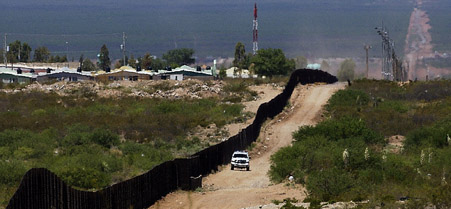Drug cartels have better communications than CBP's 'advanced' radio network
 Matt York/AP file photo
Matt York/AP file photo
TUSCON, Ariz. -- Customs and Border Patrol agents who guard 262 miles of the Arizona border have the latest digital radio technology, but still can't communicate effectively and reliably with other law enforcement organizations, Orlando Rocafort, CBP's communications coordinator, told members of the Armed Forces Communications and Electronics Association meeting here on Thursday.
Though agents now can use an advanced federal digital radio system called Project 25 and a wide area network system, Rocafort said agents remain frustrated by the most basic tenet of radio technology -- the need for line-of-sight communications. He oversees mobile technology and tactical communications for CBP's Tucson sector, which is responsible for the securing the Arizona-Mexico border.
Installation of the Project 25 system has helped improve voice communications to a certain extent, but the 40-plus repeaters, which relay radio signals, still leave some coverage gaps, Rocafort said during a panel session on mobile communications technology at the TechNet Land Forces conference. The system does not support data communications, he added.
Drug cartels operating south of the border have equal if not better communications systems, he said. The Mexican government recently captured a drug cartel network that used 74 repeaters to support a network of less than 800 radios, according to Rocafort.
CBP agents cannot communicate with other U.S. law enforcement agencies with the new Project 25 system, he said, nor with Mexican law enforcement partners.
Agents also have difficulty accessing information from radar and ground-sensor systems, as they too have-line-of sight communications problems, he added.
Only 1 percent of the agents assigned to the Tucson sector, which has the largest number of arrests for marijuana smugglers and illegal border crossers in the country, have mobile phones, according to Rocafort.
Technology that would allow agents to quickly check the identities of smugglers is badly needed, as it can be a lifesaving tool when a single agent confronts a group of smugglers, he said.
The Homeland Security Department plans to solicit bids in April for new border network of camera-equipped, stationary watchtowers that will feed imagery of suspicious individuals and vehicles to Border Patrol agents. This will replace the planned $1 billion SBInet system DHS canceled in January 2011.
Rocafort said he has one request: Give him better technology than the criminal gangs agents confront on a daily basis.
NEXT STORY: Balancing the Homeland Security Workforce






